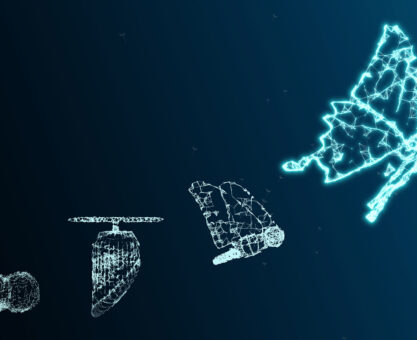Often when we talk about data, the conversation can become centred around the value of establishing a ‘360-degree view’ of the customer. While this insight can be invaluable, data can also help establish an internal 360-degree view which can bring help to harmonise internal conflicts between departments and get everyone on the same page…
One of the biggest shifts in recent years that has been largely brought about by the digital revolution we are all still currently in the midst of, is the process of breaking down silos within our organisations. All too often in the past varying business units would be acting in complete isolation of each other – the result of course being a disjointed approach to how we serve our customers and how we take our products and services to market.
In the world of field service this is perhaps most acculately seen in the division between product and service departments, yet when everyone is brought on to the same page, often through a mix of improved data flow and visibility as well as a revision of processes and workflows the impact both internally and externally can be significant.
This is something that Domino Print Sciences have discovered as they aligned their R&D and field service departments more closely.
As Eddie Storan, Head of Global Services, Domino Printing Sciences explains
“One of the challenges we have been able to overcome is the internal conflict where field service may not provide sufficient technical feedback on field issues to drive improvements, while service push back looking for clarity of requirements. This was addressed by going back to basics.
“Firstly, we removed the emotion by focusing on the data through restructuring how we use ServiceMax to gather the data required. Alongside this, we also began collaborating with R&D in how machine alerts were recorded and jointly developed fault finding processes highlighted to engineers through ServiceMax.
“There are often these silos between ‘us’ and ‘them’, particularly when it comes to Capex vs. Opex, i.e. the team that designed a piece of equipment and the team that is servicing it…’
– Christo Roux, Outotec
“This collaborative approach has addressed the internal conflicts as stakeholders are now all aligned and see the value in the data.”
A similar story of overall improvements in efficiency can also be found in Mining and Aggregates specialist Outotec.
“There are often these silos between ‘us’ and ‘them’, particularly when it comes to Capex vs. Opex, i.e. the team that designed a piece of equipment and the team that is servicing it,” explains Christo Roux, Director, Field & Workshop Services, Outotec
“We are working towards such a level of sophistication when it comes to reducing the friction between the two. Certainly having brought our field service technicians and our design engineers closer together through the data that we are providing in our field service management solution is a major step in this direction because now we can feedback directly to the developers saying ‘these are the faults that we are finding.’”
The ability to achieve such improvements in operational efficiency is certainly one of the many benefits of undergoing a digital transformation within an organisation as the steady flow of data from one business unit to another is an essential component in the mix.
However, as we see in both Domino Printing Sciences and Outotec, the ability to have a leadership team that can see beyond the day-to-day requirements of their own business unit and understand the fuller picture of what the organisation needs are as a whole, is perhaps the ‘secret sauce’ that can yield such impressive results.
Want to know more? There is an Executive Briefing from this Field Service Think Tank Session which is available in the premium content library.













